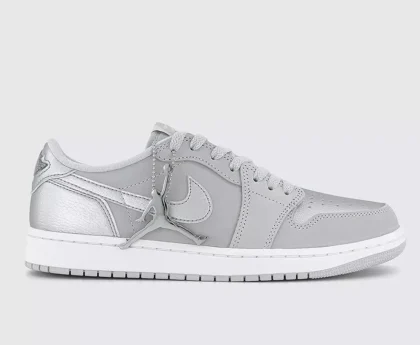Table of Contents
Introduction
Nike, the iconic sportswear and athletic shoe giant, stands as a testament to the power of innovation, athleticism, and marketing prowess. Established in 1964 as Blue Ribbon Sports by Bill Bowerman and Phil Knight, Nike has evolved from a small distributor for the Japanese shoemaker Onitsuka Tiger into a global behemoth. The journey of Nike is deeply rooted in its historical background, tracing its roots to the University of Oregon, where Bowerman, a track and field coach, and Knight, a business student, laid the foundation for what would become a global phenomenon.
Historical Background
The genesis of Nike can be traced back to a handshake between Bowerman and Knight, who initially operated as Blue Ribbon Sports. The company started by importing and distributing Onitsuka Tiger running shoes, aiming to provide quality footwear to athletes in the United States. The turning point came in 1971 when the swoosh-adorned brand was officially launched as Nike, inspired by the Greek winged goddess of victory. This marked the beginning of a legacy that would forever change the landscape of sportswear and athletic performance.
Evolution of the Brand
Nike’s evolution has been marked by groundbreaking innovations, strategic partnerships, and a relentless pursuit of excellence. The brand’s commitment to pushing the boundaries of design and technology has led to the creation of some of the most iconic sports shoes in history. From the introduction of the innovative waffle sole by Bowerman in the 1970s to the revolutionary Air Max technology in the 1980s, Nike has consistently raised the bar for athletic footwear. This commitment to innovation has not only propelled Nike to the forefront of the sportswear industry but has also influenced the way athletes approach performance and style.
As we delve deeper into the multifaceted journey of Nike, we uncover a narrative that extends far beyond mere sportswear. Nike’s success is not just in its products but also in its ability to capture the essence of athleticism and translate it into a lifestyle. The brand has seamlessly blended performance and style, leaving an indelible mark on the global cultural landscape. In the subsequent sections, we will explore the milestones, products, controversies, and future outlook that have shaped Nike into the powerhouse it is today.
The Birth of the Swoosh
Design and Origin
The iconic Nike Swoosh, a simple yet powerful emblem, has a design story rooted in symbolism and simplicity. Created by graphic design student Carolyn Davidson in 1971, the Swoosh represents movement, speed, and the wing of the goddess Nike. Its inception was serendipitous, as Phil Knight, co-founder of Nike, initially found the design unconventional but eventually recognized its potential. This distinctive logo has since become synonymous with the brand’s identity.
Significance of the Swoosh Logo
The Swoosh logo goes beyond aesthetics; it embodies the spirit of Nike and its commitment to excellence. Its sleek and dynamic design has made it instantly recognizable worldwide. The logo’s success lies in its adaptability, seamlessly fitting into various marketing materials, products, and endorsements. The Swoosh has become a symbol of inspiration for athletes and enthusiasts alike, reflecting the brand’s ethos of pushing boundaries and achieving greatness.
Early Marketing Strategies
In the early days, Nike’s marketing strategies centered around innovation and authenticity. The company strategically associated itself with emerging athletes, leveraging their stories to create a narrative that resonated with consumers. The famous “Just Do It” campaign, introduced in 1988, further solidified Nike’s position as a brand that champions determination and achievement. These early marketing endeavors laid the foundation for Nike’s unparalleled success in the competitive sportswear market.
Milestones in Nike’s Journey
Founding of Blue Ribbon Sports
The journey of Nike began under the name Blue Ribbon Sports in 1964, with co-founders Bill Bowerman and Phil Knight aiming to provide quality athletic footwear in the U.S. Their initial focus was on importing and distributing Onitsuka Tiger running shoes. The company’s commitment to delivering high-performance products laid the groundwork for what would later become a global sports and lifestyle brand.
The Transition to Nike Inc.
In 1971, the transition from Blue Ribbon Sports to Nike Inc. marked a significant milestone. The rebranding was accompanied by the introduction of the iconic Swoosh logo. This transformation reflected Nike’s ambition to carve its own identity in the market and set the stage for the brand’s meteoric rise. The change not only represented a shift in branding but also a shift in mindset, as Nike began to emerge as a force to be reckoned with in the sportswear industry.
Key Innovations and Technological Advancements
Nike’s journey has been punctuated by groundbreaking innovations. From the introduction of the waffle sole by Bill Bowerman, providing superior traction, to the Air Max technology in 1987, featuring visible air units for enhanced cushioning, Nike consistently pushed the boundaries of athletic footwear. These technological advancements not only propelled the brand ahead of its competitors but also became defining features that influenced the entire industry.
Iconic Nike Products
Evolution of Nike Shoes
The Waffle Sole Era Nike’s journey into innovation took a giant leap with the introduction of the waffle sole in 1974. Developed by co-founder Bill Bowerman using his wife’s waffle iron, this design revolutionized running shoes’ traction. The waffle sole not only enhanced performance but also marked the beginning of Nike’s commitment to cutting-edge design and functionality.
Air Max and the Visible Air Technology The year 1987 witnessed the birth of the Air Max series, a game-changer in the athletic footwear landscape. The incorporation of visible air units not only provided superior cushioning but also became a design statement. The Air Max line became a cultural phenomenon, transcending athletic use to become a symbol of street style and self-expression.
Collaboration with Athletes (e.g., Michael Jordan) Nike’s collaboration with athletes has been a cornerstone of its success. The partnership with basketball legend Michael Jordan, leading to the creation of the iconic Air Jordan line in 1985, marked a paradigm shift. This collaboration not only redefined athlete endorsements but also solidified Nike’s influence in the world of sports and fashion.
Apparel and Accessories
Activewear Lines Nike’s foray into activewear seamlessly complemented its footwear success. The brand expanded its offerings to include performance-enhancing athletic apparel, catering to a diverse range of sports and activities. The integration of cutting-edge materials and designs in activewear established Nike as a comprehensive sportswear brand.
Signature Collections Nike’s commitment to style and functionality extends beyond sports performance. Signature collections, often in collaboration with athletes or designers, have become a staple of Nike’s offerings. These limited-edition releases not only showcase artistic expression but also drive exclusivity and desirability among consumers.
The Swoosh in Sports Culture
Sponsorship and Endorsements
Notable Athletes Nike’s association with iconic athletes has played a pivotal role in shaping its brand image. From Michael Jordan in basketball to Serena Williams in tennis, Nike’s roster of endorsees reads like a who’s who in the world of sports. These partnerships not only contribute to the brand’s credibility but also serve as a testament to Nike’s commitment to excellence.
Impact on Sports Marketing Nike’s marketing strategies have redefined the landscape of sports endorsements. The brand transcends traditional advertising, creating narratives around athletes’ personal journeys. This approach has not only resonated with consumers but has also set a new standard for authenticity in sports marketing.
Nike’s Involvement in Major Sporting Events
Olympics Nike’s presence in major sporting events, particularly the Olympics, has been a consistent feature. The brand’s innovative designs and technological advancements often take center stage during these global competitions, further solidifying its status as a leader in sports apparel and footwear.
World Cup The FIFA World Cup has been a showcase for Nike’s soccer-related innovations. From cutting-edge cleat technology to eye-catching jersey designs, Nike’s influence on the world’s most-watched sport is undeniable. The brand’s presence on the global stage during such events contributes significantly to its international appeal.
Nike’s Commitment to Innovation
Technological Advancements in Sportswear
Nike’s dedication to innovation extends beyond aesthetics to the technological aspects of sportswear. Continuous research and development have led to advancements such as Flyknit technology for lightweight and breathable shoes, React foam for enhanced cushioning, and Dri-FIT fabric for moisture-wicking apparel.
Sustainable Practices and Initiatives
As sustainability gains prominence, Nike has proactively addressed environmental concerns. Initiatives like the “Move to Zero” campaign showcase the brand’s commitment to reducing its environmental impact. From using recycled materials to exploring eco-friendly manufacturing processes, Nike aims to lead the industry toward a more sustainable future.
Incorporating Technology in Retail Experience
Nike’s innovation isn’t confined to product development alone. The brand has embraced technology to enhance the retail experience. Concepts like Nike ID allow customers to personalize their products, while apps like Nike Training Club and Nike Run Club integrate technology to support and enhance users’ fitness journeys.
Controversies and Challenges
Labor Practices and Ethical Concerns
Despite its success, Nike has faced scrutiny over labor practices in its overseas manufacturing facilities. Accusations of low wages and poor working conditions have prompted the brand to reevaluate its supply chain and implement measures to address ethical concerns. Navigating these challenges has been an ongoing aspect of Nike’s corporate responsibility initiatives.
Marketing Campaign Controversies
Nike’s bold marketing campaigns have, at times, stirred controversy. From provocative advertisements to endorsements that sparked public debate, the brand has navigated through the fine line between pushing boundaries and risking backlash. The controversies, however, have become a testament to Nike’s willingness to take risks in its marketing endeavors.
Nike’s Responses and Evolving Strategies
In response to controversies, Nike has demonstrated a commitment to transparency and improvement. The brand has implemented changes in its supply chain management, adopted sustainable practices, and engaged in open dialogues with stakeholders. Nike’s ability to adapt and evolve in the face of challenges underscores its resilience and dedication to corporate responsibility.
Community and Social Responsibility
Nike’s Philanthropic Initiatives
Beyond its commercial success, Nike actively engages in philanthropy. The company has established various initiatives, such as the Nike Foundation, which focuses on empowering disadvantaged communities and promoting access to education and sports for underserved youth.
Community Engagement Programs
Nike’s commitment to communities extends to grassroots programs that promote sports participation. Initiatives like the “Made to Play” campaign aim to encourage physical activity and play among children, emphasizing the brand’s belief in the transformative power of sports.
Environmental Sustainability Efforts
Recognizing the urgency of environmental issues, Nike has set ambitious sustainability goals. The brand aims to achieve zero waste and a significant reduction in its carbon footprint. Through initiatives like the Reuse-A-Shoe program, Nike actively encourages consumers to recycle old athletic shoes, contributing to a circular economy.
The Digital Era: Nike in the Online Space
Nike’s Digital Transformation
In response to the digital revolution, Nike has embraced e-commerce and digital platforms to connect with consumers. The brand’s official website and mobile apps offer a seamless shopping experience, personalized recommendations, and exclusive releases, reflecting Nike’s adaptability to changing consumer behaviors.
eCommerce Success and Challenges
Nike’s success in the e-commerce space has been remarkable. The brand’s direct-to-consumer approach, coupled with innovative digital marketing strategies, has contributed to significant online sales growth. However, the digital landscape also poses challenges, including the need to address cybersecurity concerns and stay ahead of evolving online retail trends.
Social Media Presence and Engagement
Nike’s social media presence is a crucial component of its digital strategy. Active on platforms like Instagram, Twitter, and YouTube, the brand leverages social media to engage with its audience, showcase new products, and amplify its marketing campaigns. Nike’s ability to create shareable content and foster a sense of community contributes to its digital success.
Future Outlook
Emerging Trends in Sportswear
As the sportswear industry continues to evolve, Nike remains at the forefront of emerging trends. From sustainable and eco-friendly materials to the integration of smart technology in athletic wear, Nike’s commitment to innovation positions it to lead the way in shaping the future of sportswear.
Nike’s Position in the Global Market
Nike’s global dominance is expected to persist, driven by its brand recognition, innovation, and strategic partnerships. The brand’s ability to resonate with diverse consumer demographics and its continuous expansion into international markets solidify Nike’s position as a leader in the global sportswear industry.
Anticipated Developments and Innovations
Looking ahead, Nike is likely to focus on further integrating technology into its products, enhancing sustainability efforts, and exploring new collaborations. Anticipated innovations may include advancements in performance analytics, personalized customization, and breakthroughs in sustainable manufacturing processes.





